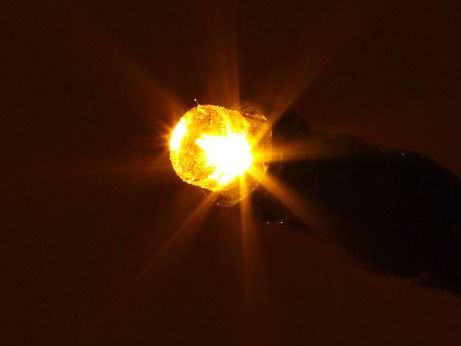Stanford researchers map out an alternative energy future for New York
New York Gov. Andrew Cuomo will soon decide whether to approve hydraulic fracturing for natural gas in the state. To date, no alternative to expanded gas drilling has been proposed.
But a new study finds that it is technically and economically feasible to convert New York's all-purpose energy infrastructure to one powered by wind, water and sunlight (WWS). The plan, scheduled for publication in the journal Energy Policy, shows the way to a sustainable, inexpensive and reliable energy supply that creates local jobs and saves the state billions of dollars in pollution-related costs.
Mark Z. Jacobson, a senior fellow with the Stanford Woods Institute for the Environment and the Precourt Institute for Energy, co-authored the study with scientists from Cornell University and the University of California-Davis.
"Converting to wind, water and sunlight is feasible, will stabilize costs of energy and will produce jobs while reducing health and climate damage," said Jacobson, a professor of civil and environmental engineering.
The study is the first to develop a plan to fulfill all of a state's transportation, electric power, industry, and heating and cooling energy needs with renewable energy, and to calculate the number of new devices and jobs created, amount of land and ocean areas required, and policies needed for such an infrastructure change. It also provides new calculations of air pollution mortality and morbidity impacts and costs based on multiple years of air quality data.
The study concludes that while a WWS conversion may result in initial capital cost increases, such as the cost of building renewable energy power plants, these costs would be more than made up for over time by the elimination of fuel costs. The overall switch would reduce New York's end-use power demand by about 37 percent and stabilize energy prices, since fuel costs would be zero, according to the study. It would also create a net gain in manufacturing, installation and technology jobs because nearly all the state's energy would be produced within the state.
According to the researchers' calculations, New York's 2030 power demand for all sectors (electricity, transportation, heating/cooling, industry) could be met by:
- 4,020 onshore 5-megawatt wind turbines
- 12,770 offshore 5-megawatt wind turbines
- 387 100-megawatt concentrated solar plants
- 828 50-megawatt photovoltaic power plants
- 5 million 5-kilowatt residential rooftop photovoltaic systems
- 500,000 100-kilowatt commercial/government rooftop photovoltaic systems
- 36 100-megawatt geothermal plants
- 1,910 0.75-megawatt wave devices
- 2,600 1-megawatt tidal turbines
- 7 1,300-megawatt hydroelectric power plants, of which most exist
According to the study, if New York switched to WWS, air pollution–related deaths would decline by about 4,000 annually and the state would save about $33 billion – 3 percent of the state's gross domestic product – in related health costs every year. That savings alone would pay for the new power infrastructure needed within about 17 years, or about 10 years if annual electricity sales are accounted for. The study also estimates that resultant emissions decreases would reduce 2050 U.S. climate change costs – such as coastal erosion and extreme weather damage – by about $3.2 billion per year.
Currently, almost all of New York's energy comes from imported oil, coal and gas. Under the plan that Jacobson and his fellow researchers advance, 40 percent of the state's energy would come from local wind power, 38 percent from local solar and the remainder from a combination of hydroelectric, geothermal, tidal and wave energy.
All vehicles would run on battery-electric power and/or hydrogen fuel cells. Electricity-powered air- and ground-source heat pumps, geothermal heat pumps, heat exchangers and backup electric resistance heaters would replace natural gas and oil for home heating and air-conditioning. Air- and ground-source heat pump water heaters powered by electricity and solar hot water preheaters would provide hot water for homes. High temperatures for industrial processes would be obtained with electricity and hydrogen combustion.
"We must be ambitious if we want to promote energy independence and curb global warming," said study co-author Robert Howarth, a Cornell University professor of ecology and environmental biology. "The economics of this plan make sense," said Anthony Ingraffea, a Cornell engineering professor and a co-author of the study. "Now it is up to the political sphere."
To ensure grid reliability, the plan outlines several methods to match renewable energy supply with demand and to smooth out the variability of WWS resources. These include a grid management system to shift times of demand to better match with timing of power supply, and "over-sizing" peak generation capacity to minimize times when available power is less than demand.
Most read news
Other news from the department science

Get the chemical industry in your inbox
By submitting this form you agree that LUMITOS AG will send you the newsletter(s) selected above by email. Your data will not be passed on to third parties. Your data will be stored and processed in accordance with our data protection regulations. LUMITOS may contact you by email for the purpose of advertising or market and opinion surveys. You can revoke your consent at any time without giving reasons to LUMITOS AG, Ernst-Augustin-Str. 2, 12489 Berlin, Germany or by e-mail at revoke@lumitos.com with effect for the future. In addition, each email contains a link to unsubscribe from the corresponding newsletter.
Most read news
More news from our other portals
Last viewed contents
Basell to stop producing polypropylene in Sarnia in 2008
BASF to sell its hydrophilic melt additives business to Techmer PM
Flue gas as a raw material – Newly discovered microorganisms utilise CO2 particularly well
INEOS Olefins and Polymers to increase prices of its HDPE pipe grades in June
Bidentate Chelates with Larger Spacers - Chelating Lewis acids prepared by double hydroalumination of dialkynylsilanes


























































